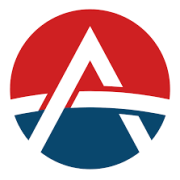Is a Self-Directed IRA Inherently Risky?
A Self-Directed IRA can be a powerful way to invest in alternative asset classes and postpone the taxation on these investments until retirement—safely and legally, just as retirement accounts are designed. But when an investor takes on different risks, does it also mean they take on more risks? Let us dive more deeply into the concept of risk, and what it means for investors who might be considering a Self-Directed IRA
You Choose Your Own Risk Level with a Self-Directed IRA
Perhaps the most important thing for investors to realize is that with a Self-Directed IRA, they are in charge. They control their financial destiny. They pick the investments they put in the IRA, which gives them the power to use nontraditional assets like real estate, tax liens, and precious metals within an IRA.
Is this inherently riskier than a standard stock market approach through an employer-sponsored plan, with limited options? The truth is an investor chooses their own risk level when they use a Self-Directed IRA. It is possible to put together a largely conservative portfolio within a Self-Directed IRA, or to use investments within an IRA to diversify a larger retirement portfolio. In this way, it is easy for investors to reduce risk as necessary.
However, investors are also free to choose an aggressive strategy if they want to. That means that investors can go after an individual private company within a Self-Directed IRA, holding on to private stock that could yield generous returns—or go all the way to zero, depending on the success of the company. All investments carry some degree of risk. It is up to the individual investor to decide how much risk they are willing to tolerate.
Using a Self-Directed IRA and Modifying Risk
The truth is risk is only “manageable.” It is not under anyone’s direct control. That is true for all investments across the range of investment types and asset classes. However, investors have been using diversification tools such as mutual funds and index funds for years. And another such strategy is modifying risk by taking on diversified portfolios that do not lean too heavily on any one type of asset.
The Self-Directed IRA’s advantage is that it makes these nontraditional asset classes easily available to investors who want to keep those assets within a retirement portfolio. For instance, an investor who owns a piece of real estate within a Self-Directed IRA does not have to worry so heavily about what the stock market does every day.
The Self-Directed IRA works by giving the investor the freedom to make these choices. The investor would then work with an IRA administration firm, who serves as the “custodian” of the account. In this arrangement, the investor exercises control while the administration firm handles the paperwork. But it is still up to the investor to make those key decisions. A Self-Directed IRA administration firm does not offer specific investment advice.
What does this mean for the investor? It means simply that the Self-Directed IRA is a highly independent way of doing things. That does not mean there is necessarily more risk. It comes down to the risk tolerance of the individual investor, as well as how each investor approaches their account.
You will have the control to determine the quality and overall risk profile of your portfolio. And that means that a Self-Directed IRA, properly administered, is not inherently riskier. That will be up to the decisions you make as an investor.
Interested in learning more about Self-Directed IRAs? Contact American IRA, LLC at 866-7500-IRA (472) for a free consultation. Download our free guides or visit us online at www.AmericanIRA.com.







